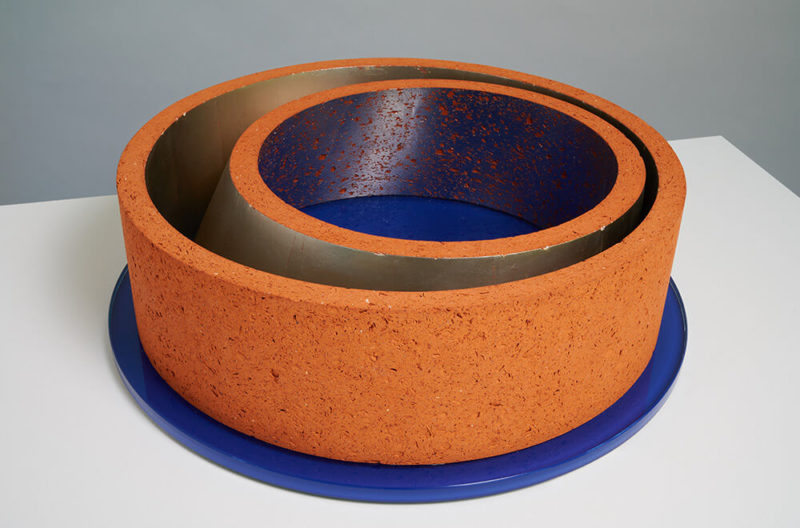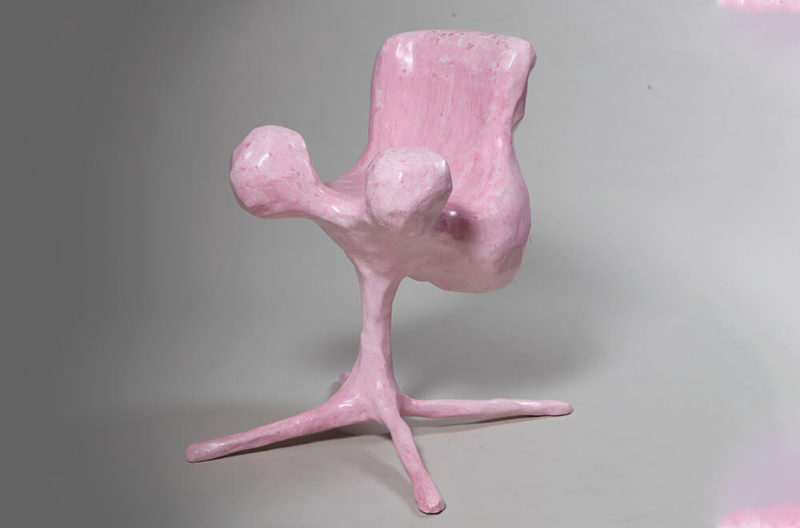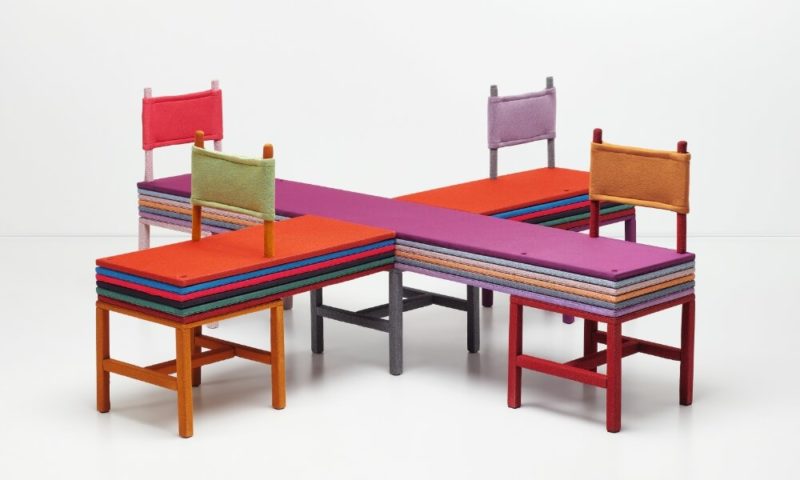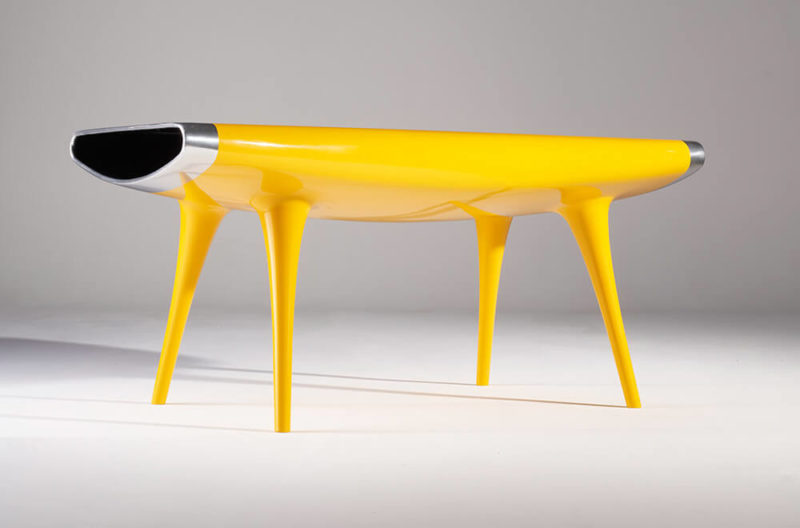‘Pratt Chair #7’, 2019
Gaetano Pesce
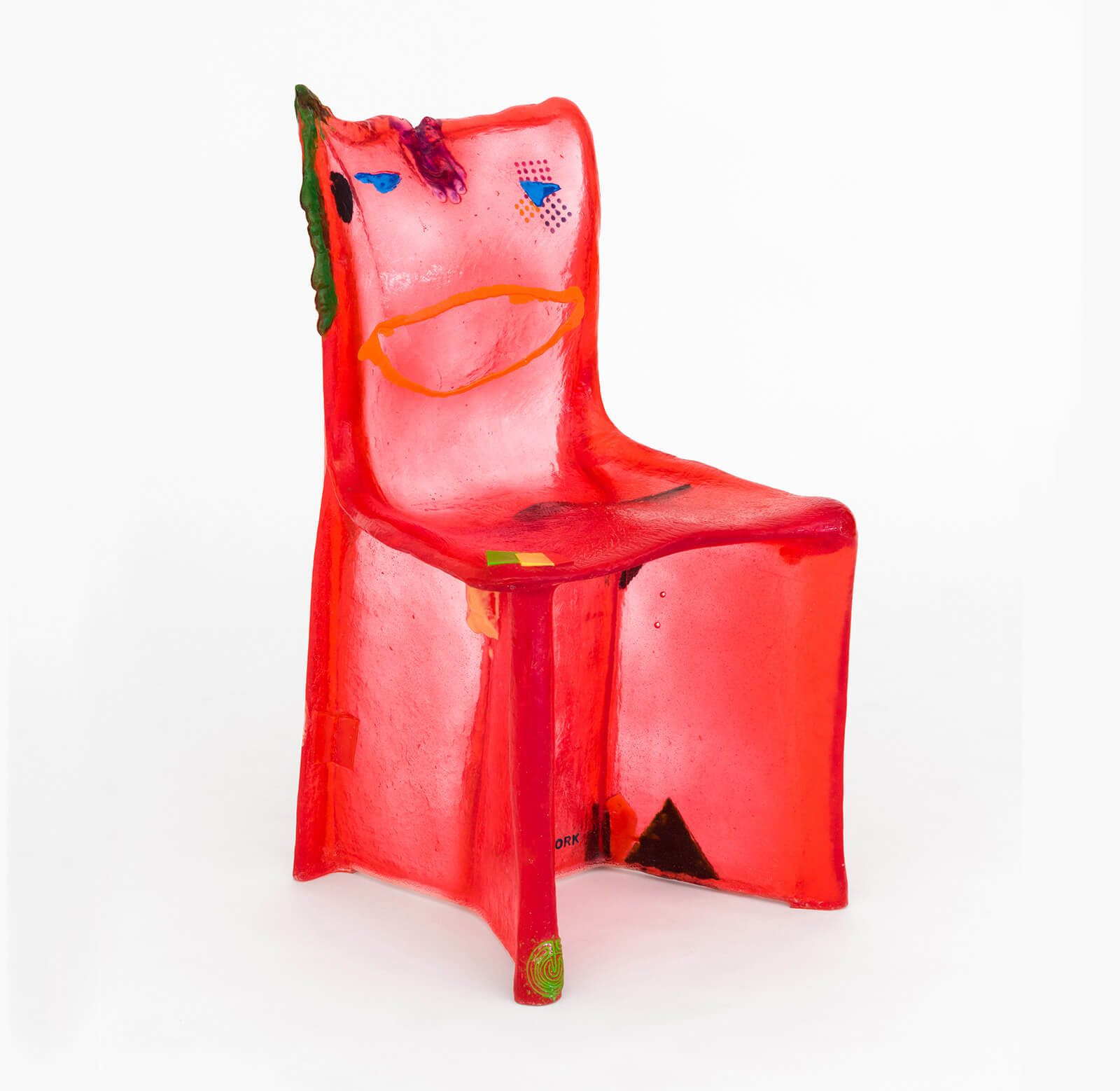
Gaetano Pesce, ‘Pratt Chair #7’, 2019
COURTESY: Salon 94
GAETANO PESCE IS 80. Trained as an architect and industrial designer, he has been making provocative, exploratory work – enlivened by a childlike irregularity of form and the bounce of vibrant colour – since the 1960s. His ambition is always to stir emotion between the viewer and the object. Born in La Spezia, in 1939, on the eve of the Second World War, after some peregrination, he landed in New York, in 1980. The Pratt Institute, in Brooklyn, offered him a teaching post in the faculty of architecture, and full use of the institution’s laboratory, studio space and tools. He set to work, playing with new industrial materials such as the coloured, translucent polyurethane resin which forms the substance of this chair.
While Pesce has always been driven by a fascination with new materials and experimental processes, the origin of the first ‘Pratt Chair’ (1984) is also conceptual. As he puts it: “This is a story between what we consider the design and what we consider art. But in the case of the ‘Pratt Chair’, it is a banality – because what changes is just the chemical formula. This is ironic because we make a lot of talk about design/art, art/design. The ‘Pratt Chair’, depending on the density of resin, is a sculpture or a chair. The idea was to make #1-9 –changing the formula from #1 liquid, to a little more resistant, to structural, to dense until #9. The formula of # 1 was jelly – as soon as we opened the mould, the chair collapsed, like a body with no bones. At that moment we cannot use the chair. We can only look at the chair – as we do with art. We then changed the formula. So, #2 is a little stronger; when we open the mould the chair stands up but if you touch it, it collapses. Then, #3 is a chair that a small child might sit on, but it also gives the child a kind of insecurity because of the chair wobbles. #4 is okay for the child, as #5 and #6 might be for an adult. Then #7 changes again because the curve hardens, hugging the back. Number #8 and #9 are so rigid that they become uncomfortable.” In creating the series, Pesce resists absolutely the modernist idea that furniture must be functional.
Since 1984, the chair has been reproduced in many different colours, the colours swooping and blurring through the form differently depending upon the resin’s density. Besides the colour, the chair’s form, first created in wax by Pesce, is impressed also with the outlines of a face, which are differentially highlighted with contrasting colours. Even the contour of the backrest, meant to represent Gaetano Pesce’s portrait in profile, is sometimes vividly marked out, and sometimes left just a ghostly hint. This 2019 version of ‘Pratt Chair #7’ is part of limited series in vibrant new colours, produced with Salon 94. It sits in the Goldilocks zone of serviceability, but also has a cheerful animation that makes it more of a companion than a chair. It has just won Best in Show in the contemporary category at Design Miami/.
Design Miami/ – the global forum for design.
Salon 94 is an art gallery in New York City featuring renowned artists and selected works of fine art.




